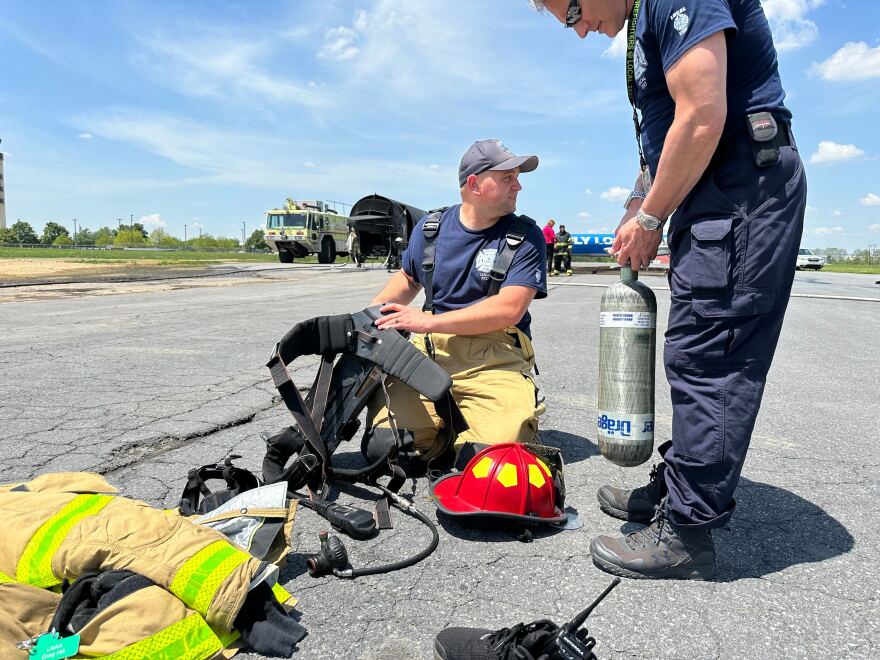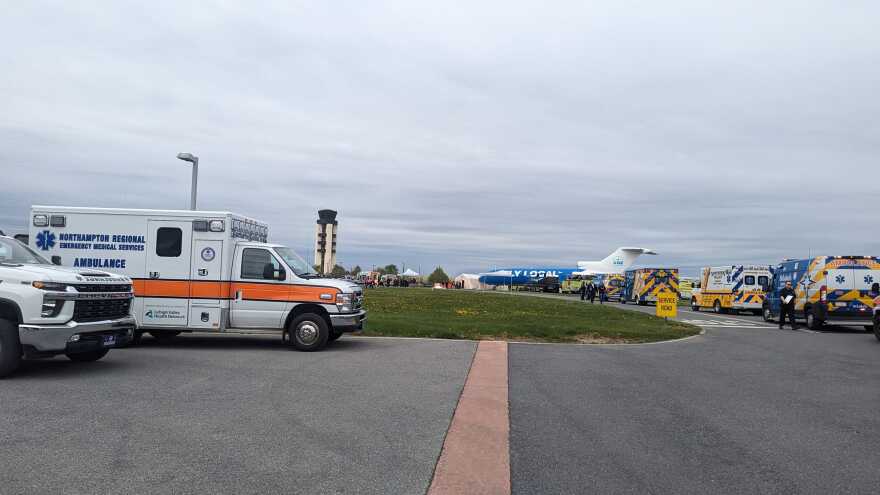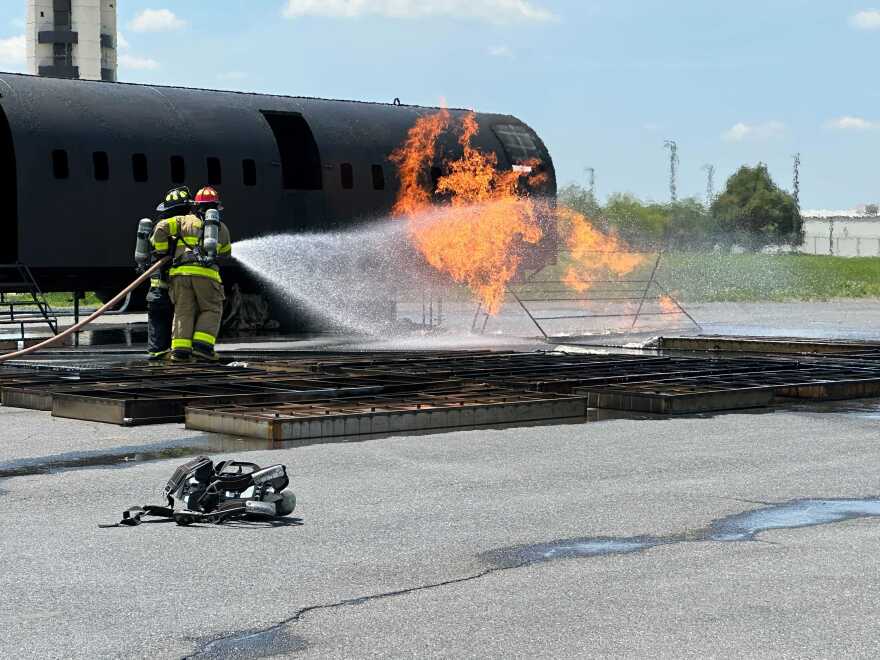HANOVER TOWNSHIP, LEHIGH COUNTY, Pa. — "Everyone out in under 90 seconds" is not just a hard and fast rule of airplane emergencies.
All passengers in modern commercial aircraft need to be able to get off in that allotted time for a reason.
It’s the same amount of time firefighters have to be geared up, on scene and climbing aboard in a real-world emergency before the plane could be engulfed in flames, leaving passengers, crew and first responders in serious jeopardy.
In 90 seconds, flames will burn straight through the aircraft, members of the Lehigh-Northampton Airport Authority (LNAA) Aircraft Rescue and Firefighting (ARFF) Division said Tuesday as they hosted a Live Fire Mobile Simulator and training exercise at Lehigh Valley International Airport.
Members of the media even got to gear up as rolling flames tore through a fuselage during a controlled burn.
The highly realistic simulator was set ablaze under the midday sun to give firefighters the opportunity to practice and prepare for real-life scenarios.
The training exercise returned to LVIA for the first time since May 2022, giving ARFF the chance to scramble equipment and work hand-in-hand with other regional mutual aid partners.
“At any moment, ARFF must be prepared to respond to the intense conditions of a real-life emergency involving an aircraft,” said Thomas R. Stoudt, executive director of the Lehigh-Northampton Airport Authority.
“Preparedness through practice is the best way to ensure proper coordination among first responders rendering aid and assistance.”
'The benefits are invaluable'
The highly realistic experience Tuesday involved a 50-foot live-fire mock fuselage and a 1,300-square-foot live-fire area designed to replicate aircraft fuel fires.
That’s because the ARFF Division typically responds to hundreds of calls each year, said Colin Riccobon, director of public and government relations for LNAA.
Those calls range from aircraft emergencies and hazardous materials spills to emergency medical service and other calls. Only about 15 are “alert level” for aircraft that might be in jeopardy for various reasons, Riccobon said.

The simulator from Fire Force Inc. provides the ability to simulate internal fires, like those in the cockpit, cabin or overhead luggage compartments.
Firefighters also learn to control and contain engine and wheel assembly fires, with an emphasis on safe angles of attack, along with exterior fuel spill fires.
“The benefits of conducting an exercise onsite are invaluable because they allow our regional mutual aid partners to respond to a simulated emergency scenario and execute their immediate response while also understanding the real-time consequences of their actions.”John Demyan
The drills give ARFF and its partners the ability to continue protecting all aviation interests to the best of their ability, including airport personnel, passengers, pilots, crew, the aircraft and other airport equipment and structures.
“Typically, ABE firefighting personnel travel to other locations for these training exercises,” said ARFF Chief John Demyan.
“The benefits of conducting an exercise onsite are invaluable because they allow our regional mutual aid partners to respond to a simulated emergency scenario and execute their immediate response while also understanding the real-time consequences of their actions.”
Preparation is key
Demyan and his colleagues said an in-flight fire is not something passengers typically have to worry about, nor the idea of making an emergency descent and landing — and not always to a runway.
But if a plane were to come into the airport and had to make a forced or emergency landing, the result can be more dangerous than the landing itself.
Spilled fuel and hot crash components can quickly result in an inferno, making every second count. And simulations this week were not the only way firefighters remain prepared.
Tuesday's drills came weeks after the airport hosted a full-scale disaster exercise of its airport emergency plan.

Airports are required by the Federal Aviation Administration to conduct those larger mass casualty exercises once every three years.
Over 219 participating personnel from more than 40 different agencies took part as if the drill were a real emergency, including firefighting and rescue equipment, emergency medical services and law enforcement agencies, along with dozens of volunteer role players.


